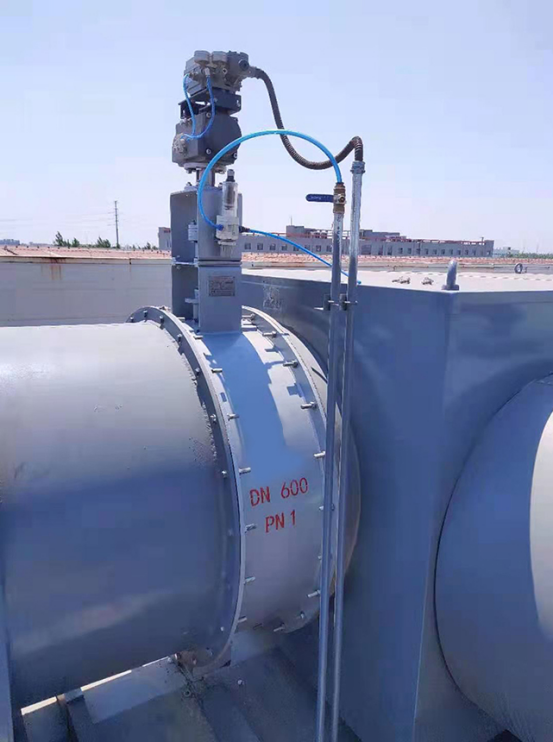Valve selection skills
Key points of valve selection
1. Identify the use of valves in equipment or devices
Determine the working conditions of the valve: the nature of the applicable medium, working pressure, working temperature and control mode.
2. Select the correct valve type
The correct choice of valve type is based on the designer's full grasp of the whole production process and operating conditions as a prerequisite. When choosing the valve type, the designer should first master the structural characteristics and performance of each valve.
3. Confirm the end connection of the valve
In threaded connection, flange connection, welding end connection, the first two most commonly used. Threaded valves are mainly nominal sizes below 50mm, if the size is too large, the installation and sealing of the joint is very difficult. Flanged valve, its installation and disassembly are more convenient, but the valve is heavier than thread connection, the price is higher, so it is suitable for all kinds of diameter and pressure pipeline connection. The welded connection is more reliable than the flanged connection because it is suitable for loading conditions. However, welded valves are difficult to disassemble and reinstall, so their use is limited to those where they usually operate reliably for long periods of time, or where conditions are heavy and temperatures are high.
4. Selection of valve material
Choose the valve shell, inner parts and sealing surface material, in addition to considering the physical performance of the working medium (temperature, pressure) and chemical performance (corrosion), also should master the cleanliness of the medium (there is no solid particles), in addition, but also refer to the relevant provisions of the state and the use of the department. Correct and reasonable selection of valve material can obtain the most economical service life and best performance of the valve. The valve body material selection order is: ductile iron - carbon steel - stainless steel, sealing ring material selection order is: rubber - copper - alloy steel -F4.

Two, common valve introduction
1. The butterfly valve
Butterfly valve is the butterfly plate in the valve body around the fixed axis rotation 90 degrees to complete the opening and closing function. Butterfly valve small size, light weight, simple structure, only by a few parts.
And it only needs to be rotated 90 degrees; Can quickly open and close, simple operation. When butterfly valve is in full open position, butterfly plate thickness is the only resistance when medium flows through the valve body, so the pressure drop produced by the valve is very small, so it has good flow control characteristics. Butterfly valve is divided into flexible soft seal and metal hard seal two types of sealing. Elastic sealing valve, sealing ring can be inlaid on the valve body or attached to the disc around, good sealing performance, can be used for throttling, and can be used for medium vacuum pipes and corrosive media. The valve with metal seal is generally longer than the valve with elastic seal, but it is difficult to complete the seal, usually used for flow and pressure drop change, the requirement of throttling performance is good. Metal seal can adapt to higher working temperature, elastic seal is limited by temperature defects.
2. The gate
Gate valve refers to the opening and closing body (valve plate) driven by the valve stem, along the sealing surface of the valve seat for lifting movement, can be connected or cut off the channel of the fluid. Gate valve is better than globe valve sealing performance, fluid resistance is small, open and close labor saving, has a certain adjustment performance, is one of the most commonly used truncation valve. The disadvantage is that the size is large, the structure is more complex than the globe valve, the sealing surface is easy to wear, not easy to maintain, generally not suitable for throttling. According to the thread position on the gate valve stem is divided into open rod type and dark rod type. According to the structural characteristics of the gate, it can be divided into wedge type and parallel type.
3. Check valve
A check valve is a valve that automatically prevents the flow of fluid from flowing backwards. The disc of the check valve opens under the pressure of the fluid and the fluid flows from the inlet side to the outlet side. When the inlet side pressure is lower than the outlet side, the valve disc under the action of fluid pressure difference, gravity and other factors, automatically closed to prevent fluid flow back. According to the structure of the lifting check valve and swing check valve. The lifting type is better than the swing type in sealing and fluid resistance. For the pump suction pipe suction inlet, should choose the bottom valve, its role is: before opening the pump perfusion water pump inlet pipe filled with water; Keep the inlet pipe and pump body full of water after stopping the pump, ready to start again. The bottom valve is generally only installed on the vertical pipeline at the pump entrance, and the medium flows from bottom to top.
4. The ball valve
The opening and closing part of the ball valve is a ball with a round through hole, and the ball rotates with the valve stem to open and close the valve. Ball valve has the advantages of simple structure, quick switch, convenient operation, small size, light weight, few parts, small fluid resistance, good sealing and convenient maintenance.
5. Cut-off valve
Globe valve is a downward closed valve, the opening and closing parts (disc) driven by the valve stem along the valve seat (sealing surface) axis for lifting movement of the valve. Compared with gate valve, it has good regulating performance, poor sealing performance, simple structure, convenient manufacturing and maintenance, large fluid resistance, cheap price, it is a commonly used cut-off valve, generally used in medium and small caliber pipelines.


